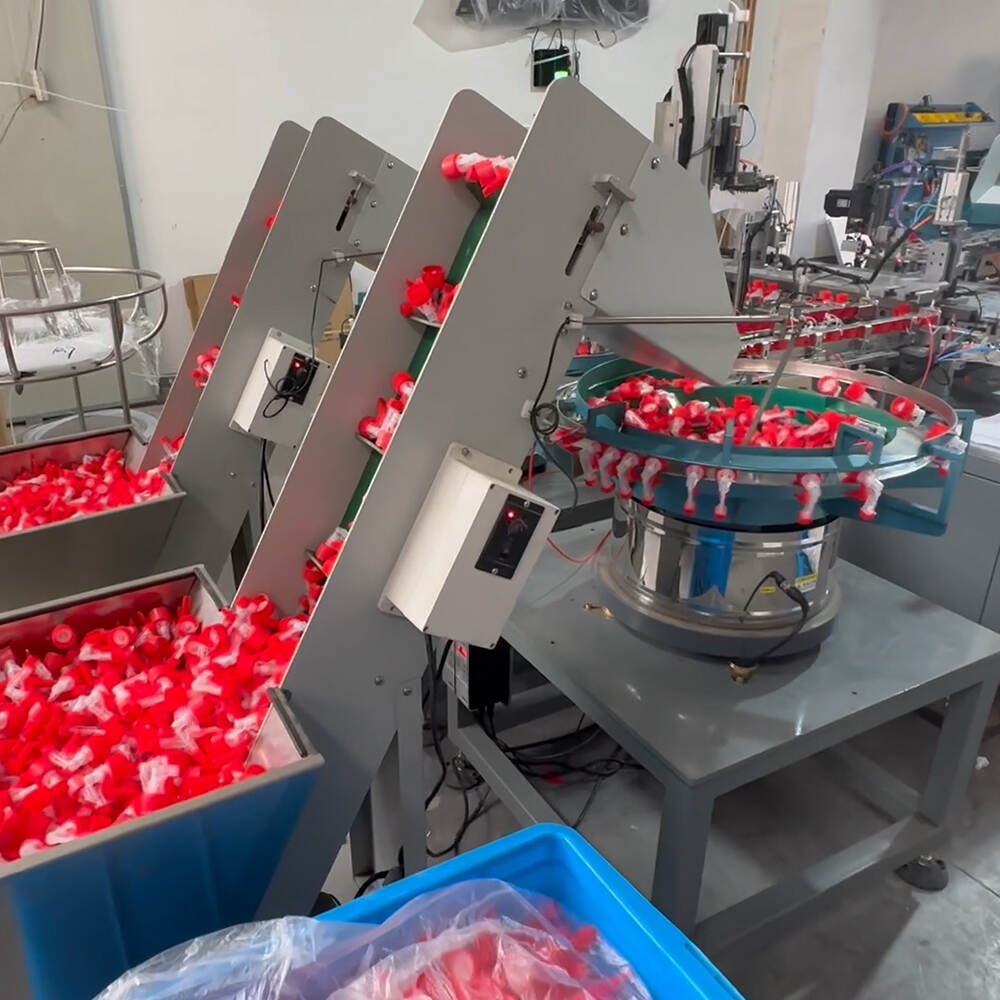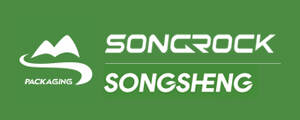Email format error
Email cannot be empty
Email already exists
6-20 characters(letters plus numbers only)
The password is inconsistent
Email format error
Email cannot be empty
Email does not exist
6-20 characters(letters plus numbers only)
The password is inconsistent


The Rise of Automation in Trigger Sprayer Assembly Machines: Revolutionizing Manufacturing and Export
In today's fast-paced world, where efficiency, speed, and precision are paramount, industries across the globe are embracing automation to stay competitive. One of the often-overlooked components of this industrial revolution is the trigger sprayer assembly machine—a vital piece of machinery used in the manufacturing of trigger sprayers for everything from household cleaners to personal care products. This blog will explore the growing role of trigger sprayer assembly machines in manufacturing, their significance in the global supply chain, and how their export is reshaping the landscape of international trade.
What is a Trigger Sprayer Assembly Machine?
Before diving into the intricacies of how these machines impact manufacturing and export, it's essential to understand what a trigger sprayer assembly machine actually does. A trigger sprayer is the pump mechanism found in many bottles, typically for liquids like cleaning products, disinfectants, and even cosmetic sprays. The assembly machine is designed to automatically or semi-automatically put together these sprayers, including components like the trigger, nozzle, spring, tube, and other parts.
A trigger sprayer assembly machine uses a combination of robotics, pneumatics, and electronics to efficiently assemble these components with minimal human intervention. This not only reduces labor costs but also increases consistency and quality. The machine's main function is to ensure that each sprayer is assembled correctly and is fully functional before it moves to the next stage of packaging or distribution.
The Growing Demand for Trigger Sprayer Assembly Machines
As more products—particularly those in the cleaning, beauty, and health sectors—become packaged in spray bottles, the demand for efficient, reliable, and cost-effective trigger sprayer assembly machines is on the rise. Companies are under pressure to increase production rates while maintaining high quality, which is why they are turning to automation.
In regions like China, India, and Southeast Asia, where manufacturing is booming, the need for trigger sprayer assembly machines has escalated in response to both local demand and international export requirements. The convenience and functionality of spray products have made them a staple in households and businesses across the world, from disinfectants to gardening sprays. This increase in demand translates into a more competitive market for manufacturers, who must adopt advanced machinery to meet the growing need.
Trigger Sprayer Assembly Machines and the Export Market
Manufacturers of trigger sprayer assembly machines are not limited to domestic markets—they are also eyeing international trade. The export of these machines has grown significantly in recent years as companies around the world look to automate their production lines. The ability to produce high-quality trigger sprayers at scale is becoming a global necessity, especially in industries that rely on mass production.
One of the key players in the export market for trigger sprayer assembly machines is China. The country has long been known for its prowess in manufacturing, and the assembly of trigger sprayers is no exception. Chinese manufacturers have developed highly sophisticated machines that can assemble trigger sprayers with incredible precision, reducing human error and increasing overall efficiency.
Why is Trigger Sprayer Assembly Machine Export So Important?
The export of trigger sprayer assembly machines holds significant importance for both the manufacturers and the global market. Here are some key reasons why the export of these machines is becoming a major focus for manufacturers:
Global Demand for Sprayers: The demand for sprayers is increasing worldwide, especially as industries like cleaning, agriculture, and personal care continue to expand. Many countries, particularly in emerging markets, are rapidly modernizing their manufacturing sectors and turning to automation to meet this demand.
Cost Efficiency: By exporting assembly machines, manufacturers allow other countries to set up their own automated production lines for trigger sprayers, thereby reducing the cost of labor and increasing production efficiency. The machines themselves are an investment, but in the long term, they offer manufacturers significant savings in terms of time and resources.
Improved Quality Control: Automation ensures that every trigger sprayer is assembled with precision. In countries with less-developed manufacturing infrastructure, the export of advanced assembly machines helps raise the standards of local manufacturing, which in turn improves the quality of products available in the market.
Technological Advancements: The export of trigger sprayer assembly machines is also part of a broader trend toward technological advancement in manufacturing. These machines are not just tools; they are highly complex systems that incorporate the latest in robotics, AI, and automation. For countries that invest in these machines, there is also an opportunity to upgrade their overall technological capacity.

How Automation Transforms Manufacturing Processes
One of the most significant benefits of trigger sprayer assembly machines is the degree to which they streamline and optimize the manufacturing process. The traditional approach to assembling trigger sprayers involved multiple manual steps, requiring workers to handle individual parts and assemble them one by one. This process was not only time-consuming but also prone to errors.
Enter the trigger sprayer assembly machine, which can automate nearly all of the tasks involved in assembly, from inserting the spring into the nozzle to attaching the tube and trigger. The machines are designed to handle parts with varying sizes and shapes, making them incredibly versatile. Additionally, many of these machines are equipped with vision systems that allow them to detect any defects or errors during assembly, ensuring that only high-quality products reach the market.
This high level of automation reduces the need for manual labor, cuts down on production time, and significantly lowers the risk of human error. The result is a faster, more efficient manufacturing process that can produce hundreds or even thousands of trigger sprayers per hour.
The Environmental Impact and Sustainability
In the face of rising global awareness about sustainability and environmental responsibility, automation in the manufacturing process also has a positive impact on the environment. By using trigger sprayer assembly machines, manufacturers can reduce waste and energy consumption. These machines are designed to be highly efficient, which helps minimize the carbon footprint associated with production.
Moreover, automated systems are often more precise when it comes to material usage. In traditional manual assembly, there was always the risk of excessive waste, whether from faulty products or errors in handling parts. With automation, these issues are significantly reduced, leading to a more sustainable approach to manufacturing.
Future Trends in Trigger Sprayer Assembly and Export
As technology continues to evolve, we can expect even greater advancements in the trigger sprayer assembly machine industry. Here are some potential trends to watch for:
Increased Integration of AI: The future of automation in trigger sprayer assembly will likely see more integration of artificial intelligence (AI) and machine learning. This could lead to machines that are not only more efficient but also capable of learning and adapting to changes in production requirements.
Customization and Flexibility: As industries continue to demand more specialized products, manufacturers of trigger sprayer assembly machines will likely focus on making their systems more flexible and customizable. This could mean faster changeovers between different sprayer designs or the ability to produce a wider variety of sprayers on a single machine.
Smarter, More Connected Systems: The Internet of Things (IoT) will likely play a larger role in the future of assembly machines. These machines could be connected to centralized control systems, allowing manufacturers to monitor performance in real-time and make adjustments remotely, ensuring optimal efficiency at all times.
Sustainability Focus: With environmental concerns growing, future trigger sprayer assembly machines will likely be designed with even greater emphasis on sustainability. This could include features that minimize energy consumption, reduce material waste, and use eco-friendly components.
Conclusion
The export of trigger sprayer assembly machines is an exciting and rapidly growing industry that showcases the power of automation to transform manufacturing processes. With the increasing global demand for high-quality, cost-effective sprayers, the role of these machines in the production process cannot be overstated. As technological advancements continue, manufacturers are finding new ways to streamline operations, improve efficiency, and produce better products while maintaining sustainability. As a result, the global trade in trigger sprayer assembly machines will continue to thrive, reshaping the future of manufacturing on a global scale.

